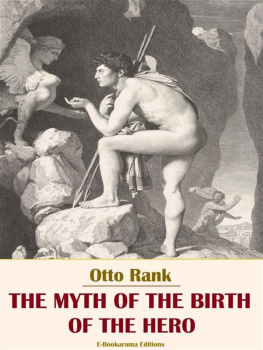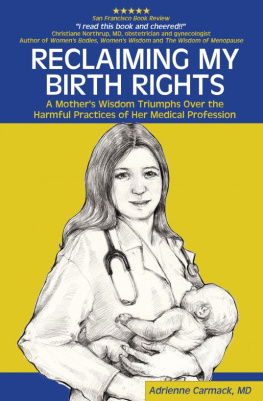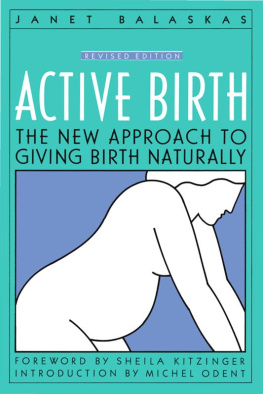The publisher assumes no liablility for any injuries or other problems sustained in conjunction with following the advice, therapy, or treatments described in this book. Individuals are cautioned that this material appears for informational use only and may not be appropriate for their individual needs.
Suzanne Arms can be contacted at (303) 884-4090
P.O. Box 1040, Bayfield, CO 81122
Text and photographs copyright 1994, 1996 by Suzanne Arms.
All rights reserved. No part of this book may be reproduced in any form without the written permission of the publisher, except in the case of brief quotations embodied in critical articles or reviews.
CELESTIAL ARTS
an imprint of Ten Speed Press
PO. Box 7123
Berkeley, California 94707
www.tenspeed.com
Photographs by Suzanne Arms
Production by Catherine Jacobes
Library of Congress Cataloging-in-Publication Data
Arms, Suzanne.
Immaculate deception II
p. cm.
eISBN: 978-0-307-79047-7
1. Childbirth. 2. MothersInterviews.
3. ObstetriciansInterviews. 4. MidwivesInterviews.
I. Title.
RG525.A792 1994
618.4--dc20 92-23355
v3.1
For Molly
Contents
Foreword
Suzanne Arms was sneaking into labor and delivery wards across the United States at the same time as I was being educatedand indoctrinatedin them. The first Immaculate Deception had just come out when I was finishing medical school in 1975. Then, when I was in my obstetric residency, I cared for a few patients who, as a result of reading it, had brought a birth plan with them to the hospital.
I went through medical school at Dartmouth, and many of our obstetric patients were well-educated women who gave birth as naturally as was possible at the time, which I later discovered wasnt natural at all! We had thought then that because we didnt give women enemas or pubic shaves we were being progressive. And, for the times, we were.
During my ob/gyn residency in Boston, at one of the venerable old hospitals, I was introduced to twilight sleep for maternity patients. This involved the injection of Seconal and Scopalamine into the laboring woman so she wouldnt feel or remember her labor. Ironically, it was when they began to use electronic fetal monitors that these same obstetricians saw the effects of twilight sleep on the baby and finally stopped the practice, replacing it with drugs such as Demerol for labor and spinal anesthesia for delivery.
When the occasional woman in labor came into the hospital carrying her birth plan, I listened and made every effort to help her achieve her desires, but it wasnt always easy to do so within the medical system. Even we doctors who were progressive and who thought, as I did, that much of what we were being taught was incomplete still believed that Suzanne Arms had overstated her case. It wasnt until much later, after I had been out of obstetrics for several years, that I finally understood how the medical system acts like a dysfunctional family in the way it keeps its members in line. It was also then that I recognized how womens need for their obstetricians approval was only an extension of their dependence upon, and need for approval from, their husbands.
Our system for birth flows seamlessly out of the values of the technologically driven, materialistic society we live in, a society that is too often cut off from natures wisdom. Ive often said that I would go back into obstetrics if and when the whole system changes, but this will only happen when a critical mass of people begin to question their fears and need for control. Then the insights gained must, of course, be applied to their daily lives.
Most of us, men and women alike, are trained with a dont just stand theredo something! mentality, and this mind-set favors the view that birth is a crisis requiring intervention. Yet, when a woman is centered in her own power while giving birth, the men around her are awed and (most of them) will naturally support her. It is only when we doubt ourselves and our ability to birth and care for our babies that we unwittingly set ourselves up for intervention and complications.
Ive learned that women and men who have a great deal of self-confidence and self-trust can go into most situations and get their needs met. One of the key ways a woman can develop a sense of trust in her own power is through birth, but most women today lack confidence in their bodies. Given the history of women and their health care in Western cultures, this is understandable. Consequently, even those who have read books such as Immaculate Deception are apt to lose their sense of self in the hospital OB ward, perhaps more than in any other setting. Fear is so contagious, and that particular fear is fueled, in part, by the unresolved birth trauma of everyone present at a birth. To whom do we turn for guidance?
Immaculate Deception II is a treasure! Suzanne Arms tells the truth, and she does it with great clarity and compassion. Her photographs are compelling and heart-centered, and show the healing of birth and the nurturing qualities of both men and women. I also love the quotes from female physicians whose experiences, like mine, have led them to question the system that trained them. These awakened women healers are pioneersthey understand and support womens power in birth and what it means to trust nature, a view not all women physicians share.
The health care system as we have known it is in chaos, and this includes maternity care. The system and the mind-set that created it are going through a painful and dysfunctional laborstruggling to stay in control. Suzanne Armss vision, put forth so compellingly in this book, can help midwife this system right now. Like all good birth attendants, Suzanne understands the nature and power of support, understanding, and compassion. Those qualities help a woman, and even a health care system, to let go and allow the new creation to emerge.
Christiane Northrup, M.D., O.B.
This is an extraordinary book. For many, like myself, it will be a hard book to read. For physicians, it will be hard to read about our shortcomings, our inability to deliver the illusion of perfection we claim to offer, and our failure to provide safe, gentle passage to each new life placed in our hands. For women who have given birth, it will be hard to see the ways in which we failed ourselves and our babies by not asking for moremore information, autonomy, and care from our families, caregivers, and culture. Still, it also offers illumination and the possibility of a different way to bring new souls into the world; until we can see a different possibility, we will never change.
For physicians who have seen the problems with our high-tech obstetrics and feel trapped by the malpractice attorney, the third-party payer, and the patients who want the best medicine science has to offer and mean the most intervention possible, this book will be a friend.








